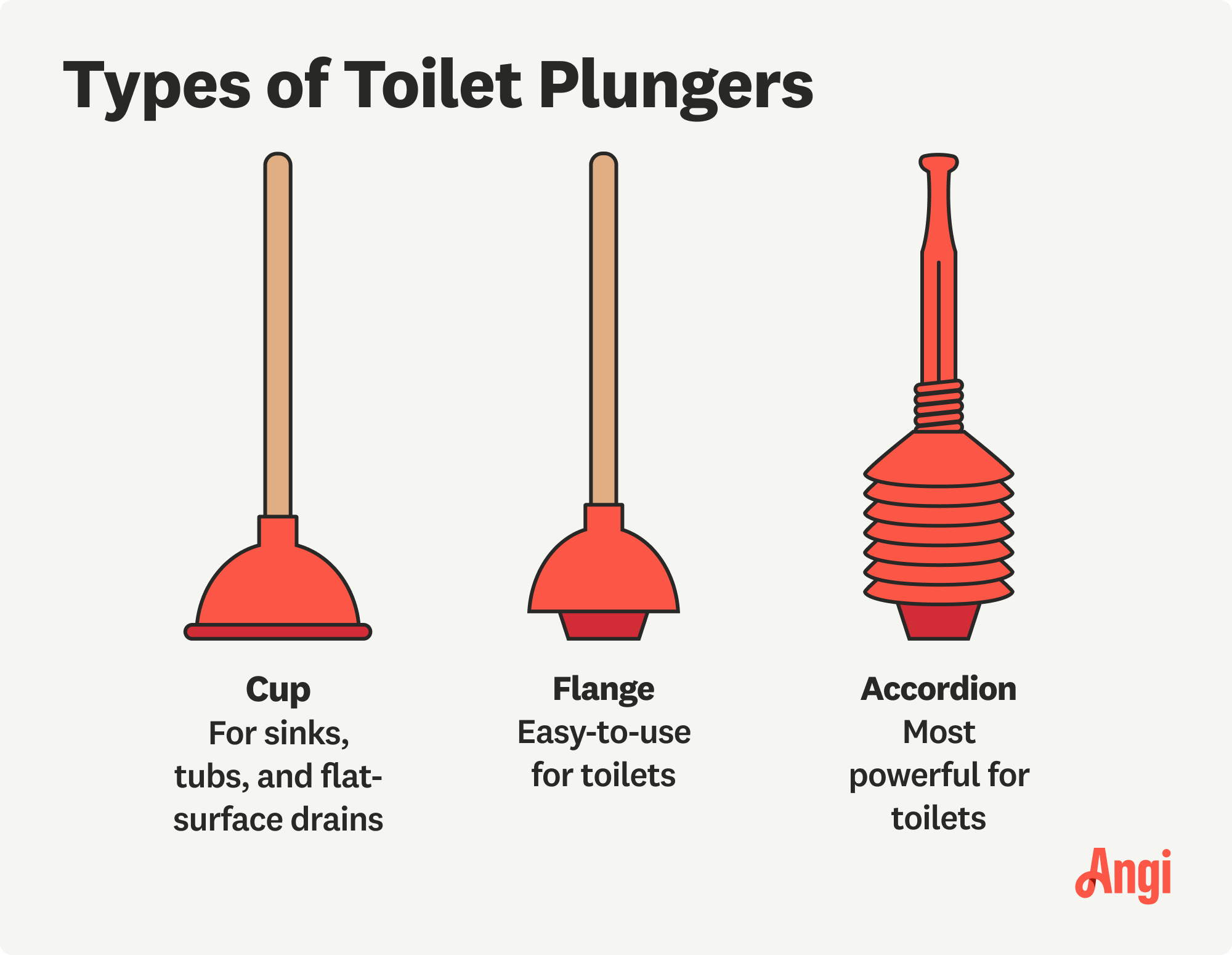
Learn how much plumbers cost in Columbus, Ohio. Discover pricing for faucet repairs, pipe work, and emergency services, plus how you can save money.
You can’t always just flush your worries away


A clogged toilet is a common problem that most people encounter at least once. It’s best to fix the issue right away to avoid an overflow of water and hazardous waste onto the floor and surrounding fixtures. This guide lays out eight tips to unclog a toilet, whether or not you have a plunger, snake, or chemical solution on hand.
As soon as you realize a toilet is clogged, stop additional water from filling the bowl, which could cause it to overflow. Do not flush again, and shut off the water supply if needed. You can either remove the tank lid and block the filling hole with the rubber flapper or turn the water shut-off valve behind the toilet.

If your toilet is clogged with nothing in it, the blockage may be just out of view within the plumbing. If you can’t see the problem, a plunger is a good tool to try.
It's worth noting that the classic cup plunger is the least effective tool for toilets. The preferred tools are a flange plunger (with an additional circular flange at the bottom of the cup) or an accordion plunger.
If there is not enough standing water in the toilet bowl to cover the bottom of the plunger, add more from the sink or shower. Lower the plunger slowly and diagonally to cover the toilet drain hole completely without trapping additional air underneath. Push down to obtain suction, then give one hard pull. If water doesn't immediately start to drain from the bowl, repeat this process.
You can also plunge in reverse by pushing instead of pulling, forcing water down to loosen the blockage. Once the bowl is clear of water, turn the water supply back on and flush again to ensure the blockage is clear. If not, repeat the plunging process or try a different method.

A drain auger or plumbing snake is a flexible wire coil that extends into pipes to clear blockages without causing damage. Feed the end of the cable into the toilet drain hole and crank the handle clockwise to push the auger in. If you snag the blockage, reverse the crank to pull it out. Clean the auger when finished.
If you don't have an auger, you can make one in a pinch by unbending a wire coat hanger and fishing it into the drain. You can also rent an auger from your local home improvement center to avoid paying for a new tool.
If there is no plunger or auger nearby, try loosening the blockage with a toilet brush. Angle the brush down the drain hole, twisting and pushing it into place. When it's gone as far as it can, rapidly push and pull on the handle to loosen the blockage.
If the bristles are too wide, insert the brush handle and use it as a makeshift snake. Try a different method if you don't see results after several seconds.
One alternative to plunging and snaking tools is a chemical drain opener. These products are available at most home goods stores and contain enzymes that help break down solid waste when used according to the package instructions.
Make sure you purchase a product that's safe for toilets and septic tanks. When handling chemicals, always protect yourself with gloves and other safety gear.

Try pouring a half-gallon of hot water into the bowl and letting it sit for a few minutes. Don't use boiling water, as this can damage porcelain toilets.
To speed up the process, add one of several solutions along with the hot water:
A quarter cup of liquid dish soap, hand soap, or body wash
Two solid dish detergent tabs
One cup of baking soda and two cups of vinegar
Allow your solution to sit overnight and dissolve the clog, then attempt to flush the toilet again.
When a solid object, such as a hairbrush, hand towel, or child's toy, is accidentally dropped into the toilet, you may be able to unclog it by hand. Don a pair of long plumbing gloves and reach your arm into the toilet drain to grab the item. Thoroughly wash your gloves, hands, and the object afterward.
If your DIY methods don't work and the clog doesn't clear itself after a day or so, call a toilet pro near you. Depending on what is clogging your toilet, this may be your best option to avoid damaging your plumbing. Clogs may be as simple as a buildup of waste and toilet paper, but they can also be more serious.
This is especially true if you smell gas in your bathroom, which can indicate a sewer problem. In this case, open your bathroom windows and contact a plumber immediately.
From average costs to expert advice, get all the answers you need to get your job done.

Learn how much plumbers cost in Columbus, Ohio. Discover pricing for faucet repairs, pipe work, and emergency services, plus how you can save money.

Learn about main water line repair costs in Columbus and what affects pricing to be prepared before you start getting estimates.

Discover the leading factors affecting your main water line replacement cost in Columbus, including length, material selection, and installation details.

Insulating your pipes is a simple DIY project that can prevent costly damage and lower your energy bills. Learn how to insulate your pipes yourself with this easy guide.

Severe winter weather causes well water pipes to freeze, obstructing water flow and leading to pipe bursts. Here’s what to do if your well water is frozen.

Before purchasing and installing a new toilet, you need to know the toilet rough-in measurement to ensure proper integration. Here’s how to get it done.